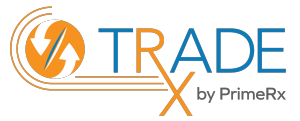FDA’s Oncologic Drugs Advisory Committee (ODAC) voted unanimously to recommend approval of EP2006 as the first biosimilar drug available in the United States. ODAC found EP2006 to be highly similar to the biologics medication filgrastrim (Neupogen).
Model, structure of filgrastim, European-Bioinformatics Institute (Wikipedia)
EP2006 is made by Sandoz, the generic unit of Novartis, and is currently sold in Europe as Zarzio. It will be sold in the United States as Zarxio. Industry analysts estimate that the introduction of Zarxio, which is expected to cost significantly less than the more than $300 per retail dose of Neupogen, could save American patients $5.7 billion over 10 years.
Long term implications for drug costs
Successful launch of Zarxio in the United States could be just the beginning, with biosimilars for conditions such as rheumatoid arthritis, Crohn’s disease, lupus, and many more diseases.
In countries where biosimilars are currently available, their average price is 1/3 that of biologics. One analyst estimates that if all 11 biosimilars currently in development were approved, total savings could equal $250 billion over 10 years.
For those patients who must choose between expensive medications and other living expenses, cost reductions would be a major benefit and would increase the likelihood of patients taking medications as prescribed.
Biologics vs. Biosimilars
Since development of biologics began in the 1970s, they have been recognized not only for their leading edge science and expense to develop, but also for the inability to create a generic form, due to the cultivation and use of a single strain of organic material.
Without drug price competition created by generics, drug manufacturers were in no fear of so-called patent cliffs, the steep decline in margins expected once a patent has expired and generics have been introduced.
With numerous patents for biologics expiring in recent and upcoming years and advances in science, biosimilars are to biologics what generics are to brand name drugs.
Regulatory pathway
Biosimilars, drugs that are so similar to biologics that they are virtually indistinguishable from the biologic in clinical trials, have been available in Europe since 2008. At that time, there was no judicial pathway to approval for biosimilars in the USA.
In 2009, the Biologics Price Competition and Innovation Act was introduced in Congress, and became law as part of the Patient Protection and Affordable Care Act in 2010.
EP2006 became the first drug to be reviewed under the new biosimilar pathway when FDA accepted Sandoz’ application to market EP2006 in July 2014.
ODAC recommended approving Zarxio for all five of Neupogen’s licensed uses. While FDA is not bound by the 14-0 vote, it usually follows committee recommendations. FDA will publish its decision in the first half of 2015.
For an in-depth look at this story, visit these references:
Reducing drug costs for independent community pharmacies today
While the benefits to patients of biosimilars looks promising, TRxADE is delivering lower drug costs to independent community pharmacies today and every day.
